How to Create Data-Driven Culture: Key Steps
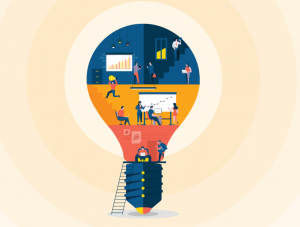
In today’s competitive business environment, companies are looking for the cutting edge they can get to stay ahead. One of the ways to beat the competition is by establishing a culture of data-driven decision making. In this blog post, we will explore how to create a data-driven culture that values data analytics and provides actionable insights into what needs to be done next in order to create a future-ready digital organization. What is data-driven culture? Data-driven culture is about creating an organization that is data-driven, where everything from business processes to culture supports the need for data-based decision making. In other words, every step of a business process must be …
Data Readiness Levels Assessment: Concepts
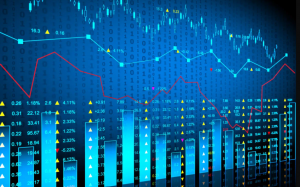
Data readiness levels (DRLs) and related assessments are an important part of data analytics. Data readiness levels is a concept where different stages represent the quality and maturity of data. Data science is becoming increasingly popular, but not all companies have the right level of data readiness for this type of work. Performing data readiness levels assessment is important because it gives an insight into the quality and quantity of your current datasets and helps determine future success of the data analytics project. This blog post will explain what data readiness levels are and why assessment tests are important in relation to them. What are data readiness levels? Data readiness …
Data Science / AI Team Structure – Roles & Responsibilities
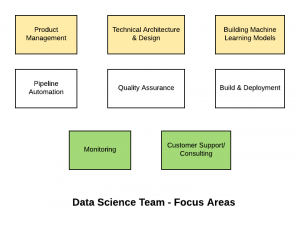
Setting up a successful artificial intelligence (AI) / data science or advanced analytics practice or center of excellence (CoE) is key to success of AI in your organization. In order to setup a successful data science COE, setting up a well-organized data science team with clearly defined roles & responsibilities is the key. Are you planning to set up the AI or data science team in your organization, and hence, looking for some ideas around data science team structure and related roles and responsibilities? In this post, you will learn about some of the following aspects related to the building data science/machine learning team. Focus areas Roles & responsibilities Data Science Team – Focus …
Sentiment Analysis & Machine Learning Techniques
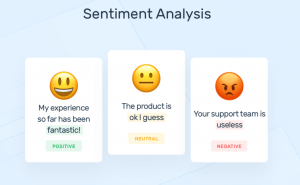
Artificial intelligence (AI) / Machine learning (ML) techniques are getting more and more popular. Many people use machine learning to analyze the sentiment of tweets, for example, to make predictions related to different business areas. In this blog post, you will learn about different machine learning / deep learning and NLP techniques which can be used for sentiment analysis. What is sentiment analysis? Sentiment analysis is about predicting the sentiment of a piece of text and then using this information to understand users’ (such as customers) opinions. . The principal objective of sentiment analysis is to classify the polarity of textual data, whether it is positive, negative, or neutral. Whether …
Clinical Trials & Predictive Analytics Use Cases
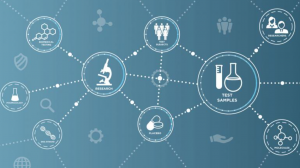
Analytics plays a big role in modeling clinical trials and predictive analytics is one such technique that has been embraced by clinical researchers. Machine learning algorithms can be applied at various stages in the drug discovery process – from early compound selection to clinical trial simulation. Data scientists have been applying machine learning algorithms to clinical trial data in order to identify predictive patterns and correlations between clinical outcomes, patient demographics, drug response phenotypes, medical history, and genetic information. Predictive analytics has the potential to enhance clinical research by helping accelerate clinical trials through predictive modeling of clinical outcome probability for better treatment decisions with reduced clinical trial costs. In …
Local & Global Minima Explained with Examples
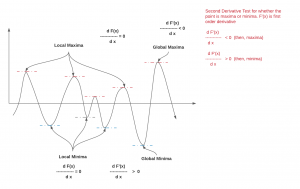
Optimization problems containing many local minima remains a critical problem in a variety of domains, including operations research, informatics, and material design. Efficient global optimization remains a problem of general research interest, with applications to a range of fields including operations design, network analysis, and bioinformatics. Within the fields of chemical physics and material design, efficient global optimization is particularly important for finding low potential energy configurations of isolated groups of atoms (clusters) and periodic systems (crystals). In case of Machine learning (ML) algorithms, theer is a need for optimising (minimising) the cost or loss function. In order to become very good at finding solutions to optimisation problems (relating to minimising …
Procure-to-pay Processes & Machine Learning
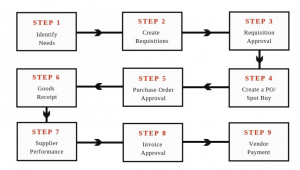
The procure-to-pay (P2P) cycle or process consists of a set of steps that must be taken in order for an organization to procure and pay for goods and services. Procurement is the process by which organizations purchase goods, supplies, equipment, or services from outside sources. The procurement function may also serve as an intermediary between two internal departments or divisions that have overlapping needs. In this blog post, we will discuss how AI / machine learning can be leveraged to automate certain procure-to-pay processes such that procure-to-pay teams can focus on core business goals. What is the procure-to-pay cycle or process? The procure-to-pay (P2P) cycle or process is defined as …
Building Machine Learning Models & Dev Challenges
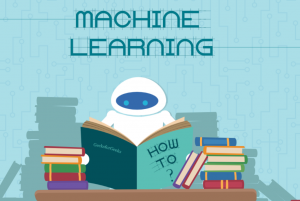
The machine learning models and AI implementation industry is booming. The demand for machine learning models has never been higher, but the challenges of machine learning development and deployment have also increased. In this post, we will discuss a few common machine learning development and deployment challenges. In future blogs, we will learn about solutions to overcome these challenges. This blog post will help you learn and understand some of the key challenges that you may face if you are planning to start machine learning practice in your organization. These challenges are also very much relevant if you have machine learning engineers and data scientists working across different offices/locations on …
Poisson Distribution Explained with Python Examples

Poisson distribution is a probability distribution that can be used to model the number of events in a fixed interval. It is often referred to as “random poisson process” or “poisson process”. The poisson distribution describes how many occurrences of an event occur within a given time frame, for example, how many customers visit your store or restaurant every hour. In this post, you will learn about the concepts of Poisson probability distribution with Python examples. As a data scientist, you must get a good understanding of the concepts of probability distributions including normal, binomial, Poisson etc. What is Poisson distribution? Poisson distribution is the discrete probability distribution which represents the …
Demand Forecasting & Machine Learning Techniques
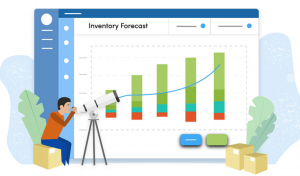
Machine learning is a technology that can be used for demand forecasting in order to make demand forecasts more accurate and reliable. In demand forecasting, machine learning techniques are used to forecast demand for a product or service. There are different types of machine learning/deep learning techniques used in demand forecastings such as neural networks, support vector machines, time series forecasting, and regression analysis. This blog post will introduce different machine learning & deep learning techniques for demand forecasting and give an overview of how they work. What is the demand forecasting process? The demand forecasting process is defined as the creation of demand forecasts, demand planning, and demand decision …
Agriculture Use Cases & Machine Learning Applications
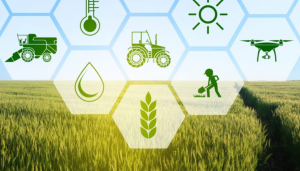
Today agriculture is in a state of flux. Farmers are faced with the challenges of producing more food in face of a changing climate and population growth, while also adapting to evolving technologies that have changed agriculture forever. Machine learning has been applied to agriculture for many different use cases, from irrigation scheduling to pest management. In this post, we will explore agriculture use cases for machine learning & deep learning that can help farmers meet these challenges head-on. Different machine learning applications can be built around these agricultural use cases. It will be helpful for data scientists to get a high level idea around use cases and related machine …
Credit Card Fraud Detection & Machine Learning

Credit card fraud detection is a major concern for credit card companies. With credit cards so prevalent in our society, credit card companies must be able to prevent credit card fraud and protect their customers. Machine learning techniques can provide a powerful and effective way of detecting credit card fraud. In this blog post we will discuss machine learning techniques that data scientists can use to design appropriate credit card fraud detection solutions including algorithms such as Bayesian networks, support vector machines, neural networks and decision trees. What are different types of credit card fraud? The following are different types of credit card fraud: Counterfeit credit cards: Counterfeit credit cards …
BigQuery ML Concepts & Examples: Starter Guide
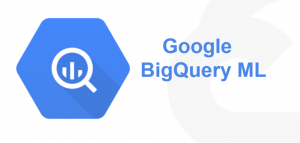
BigQuery ML is a machine learning platform that allows data scientists to build models using the power of their data. Unlike traditional machine learning, BigQuery ML does not require any programming skills, making it an easy way to get started with machine learning. Product managers and data scientists can both benefit from BigQuery ML by finding insights in their own datasets or collaborating with one another on new applications. The introduction of BigQuery Machine Learning Platform has enabled organizations to take advantage of the benefits of machine learning without needing deep expertise in either big-data or analytics technologies. This blog post will provide an overview of what you need to …
Quantum machine learning: Concepts and Examples
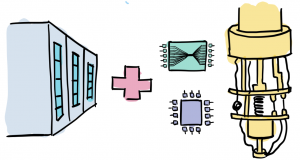
Machine learning has been a hot topic for many years now. There are different types of machine learning algorithms that data scientists and engineers use in their projects, depending on the type of problem they’re trying to solve. Recently, quantum machine learning has emerged as an alternative to classical machine learning techniques. The future of quantum computing holds tremendous possibilities promising exponential speedups over current technology. In this blog post, we’ll explore quantum machine learning (QML), its benefits over traditional machine learning methods, and the common quantum computing concepts it relies on. What are key concepts related to quantum computing? Quantum computing takes advantage of the computing power available through …
Relationship: Analytics & Data-Driven Decision Making

Data analytics is a topic that many data-driven organizations are becoming increasingly interested in. Data analytics often includes the process of analyzing data to find insights that can be used to make decisions. But what does this mean? How are different types of analytics related to data-driven decision-making? This blog post will explore how an organization’s use of data can help them make better, more informed decisions. Before getting into the details, lets quickly understand how business analytics is related data analytics. There are a number of facets that business analytics and data analytics have in common. In both the cases, the common steps include dealing with gathering data from …
Covid-19 Machine Learning Use Cases

The covid-19 virus is a type of coronavirus. It has been linked to severe acute respiratory syndrome (SARS). The covid-19 virus can be contracted through contact with saliva or mucous from an infected person. Symptoms include fever, cough, sore throat, headache, muscle aches, and fatigue. There are several problems related to the Covid-19 pandemic which can be solved using machine learning/data science techniques. In this blog post, we will look into some of these Covid-19 use cases which can be solved using machine learning classification and clustering techniques. What are Covid-19 data sets publicly available? One of the datasets available for studying Covid-19 is GISAID data (https://www.gisaid.org/) that represents million …
I found it very helpful. However the differences are not too understandable for me